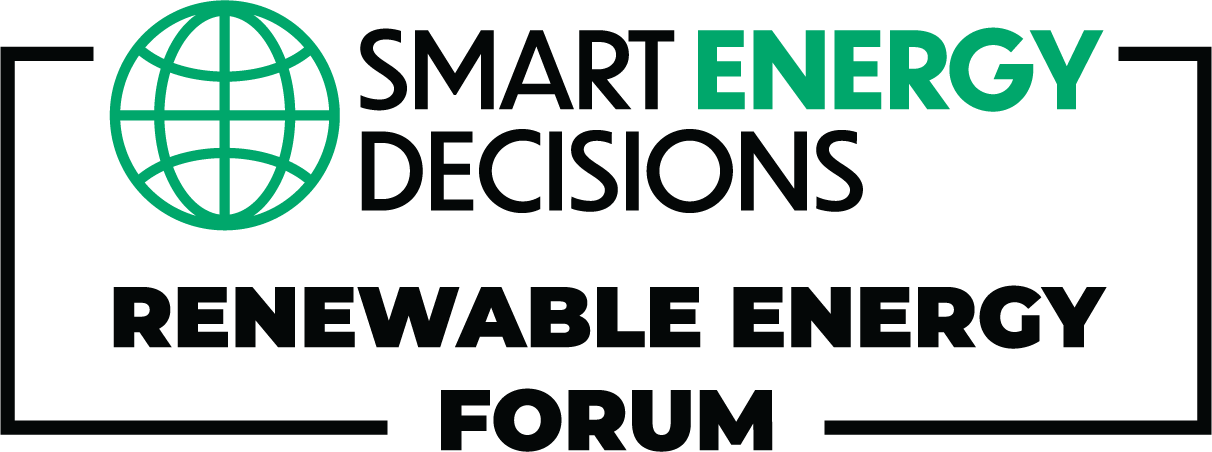Distributed Generation, Regulation, Sourcing Renewables - July 8, 2024
2024 Renewable Energy Forum Wrap-Up
What’s 20 inches of rain when there are renewable energy goals to be met? The unprecedented storms that hit South Florida as attendees assembled for the 2024 Renewable Energy Forum did little to dampen the resolve of those making their way to the JW Marriott Miami Turnberry Resort & Spa in Aventura on June 12-14 to make strides toward those goals.
Attendees proceeded to make outstanding contacts and benefit from industry-leading content throughout the Forum.
Noting that the Renewable Energy Forum began in 2016, Wes Doane, Vice President, Smart Energy Decisions said, “The renewables landscape was a lot different at that time. Today, there are new headwinds and new opportunities, but the goals remain the same: to connect buyers and suppliers to bring more projects online, connect with your peers, and learn about the latest trends and best practices from our presenters.”
The Renewable Energy Forum featured educational sessions, Peer-to-Peer Conversations, and a series of networking opportunities to share successes and challenges. The event also facilitated more than 300 one-to-one business planning meetings between energy customers and suppliers. At every turn, attendees demonstrated a high level of engagement as conversations flowed and connections were made.
Following are brief highlights from the Renewable Energy Forum’s General Sessions:
PIVOT! How to Keep Advancing Your Strategy When Everything Changes…
Sarah Johnston, Managing Director, Marketing and Carbon Differentiated Strategy, Calpine Energy
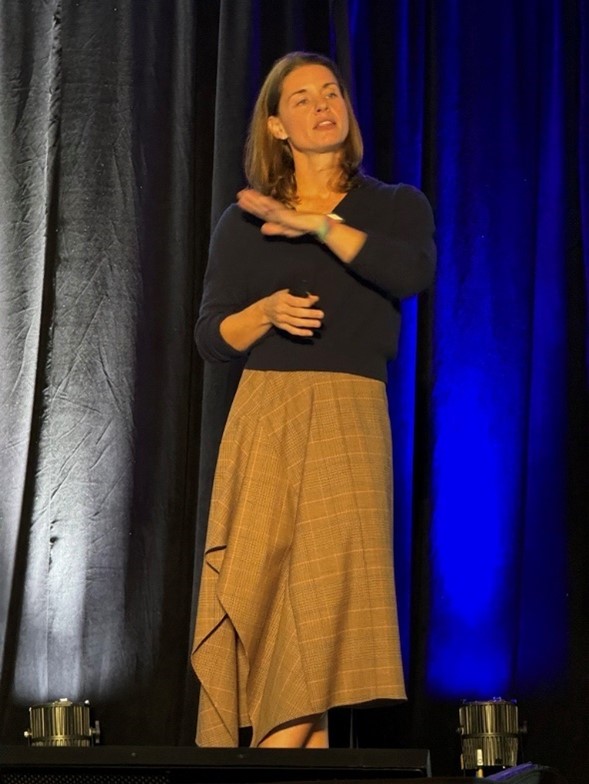 In the opening keynote, Sarah Johnston noted that most attendees have already been living through changes that have impacted their ability to achieve energy goals. “This information is sometimes held close to the vest because it's seen as a competitive advantage and differentiator for the organization. But some long-term strategy significantly impacts people who are doing other things within the organization and are normally kept outside of a kind of circle of trust.” Johnston noted the importance of “bringing into the discussion those stakeholders who have an effect or are affected by this strategy.” In particular, she said, energy leaders need to know about risks that affect energy markets and projects they are considering. “The reality is, there's just uncertainty, and uncertainty equals risk. The good news is, most of the risk associated with renewable energy and energy in general is quantitative. If you can measure it, then you can at least try to manage it.”
In the opening keynote, Sarah Johnston noted that most attendees have already been living through changes that have impacted their ability to achieve energy goals. “This information is sometimes held close to the vest because it's seen as a competitive advantage and differentiator for the organization. But some long-term strategy significantly impacts people who are doing other things within the organization and are normally kept outside of a kind of circle of trust.” Johnston noted the importance of “bringing into the discussion those stakeholders who have an effect or are affected by this strategy.” In particular, she said, energy leaders need to know about risks that affect energy markets and projects they are considering. “The reality is, there's just uncertainty, and uncertainty equals risk. The good news is, most of the risk associated with renewable energy and energy in general is quantitative. If you can measure it, then you can at least try to manage it.”
Beyond ESG: Making Renewable Energy a Business Priority
Charles Benisch, Director, Renewables Advisory, ENGIE Impact
 “All too often, our organizations have given us a very admirable target — a renewable energy percentage of 100% by 2040 or 2050 — or a greenhouse gas emission reduction target, or a science-based target, but they have not unlocked the budget to accomplish that target.” The key, according to Charles Benisch, is “how to connect renewable energy not to the emission reduction targets or renewable energy percentages that we are committed to achieve, but instead to organizational or executive priorities. Every executive has a mantra to increase profit — either by growing revenue or cutting costs or increasing profit — to manage risk to protect the long-term viability of the organization or to satisfy a compliance requirement. So if we connect renewable energy to these C-suite priorities, we can think about different solutions that aren't the ‘end all, be all’ but are part of a mix of complementary solutions that address those three executive issues.”
“All too often, our organizations have given us a very admirable target — a renewable energy percentage of 100% by 2040 or 2050 — or a greenhouse gas emission reduction target, or a science-based target, but they have not unlocked the budget to accomplish that target.” The key, according to Charles Benisch, is “how to connect renewable energy not to the emission reduction targets or renewable energy percentages that we are committed to achieve, but instead to organizational or executive priorities. Every executive has a mantra to increase profit — either by growing revenue or cutting costs or increasing profit — to manage risk to protect the long-term viability of the organization or to satisfy a compliance requirement. So if we connect renewable energy to these C-suite priorities, we can think about different solutions that aren't the ‘end all, be all’ but are part of a mix of complementary solutions that address those three executive issues.”
General Session: The Continued Evolution of Offsite Renewable Purchasing
Luke Penne, Sr. BDM, Hourly Carbon-Free Energy Matching, Constellation
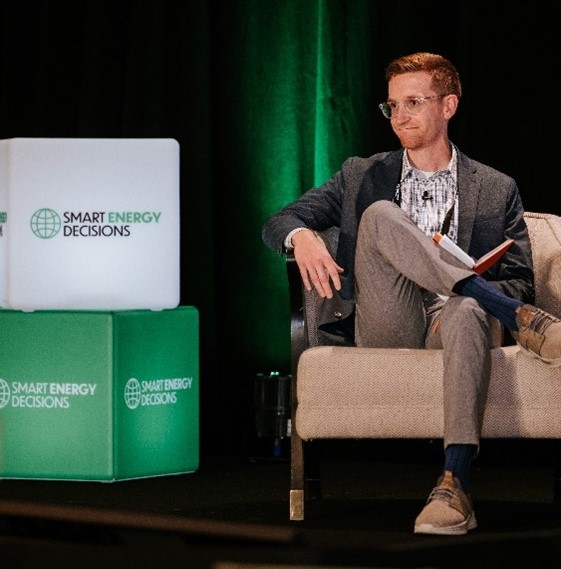 Discussing the increase in demand for hourly carbon-free electricity (CFE), Luke Penne noted that what doubles the impact "is the fact that those companies pursuing 24/7 solutions are the largest energy buyers — hyperscale data centers, the federal government, and so on." For relatively smaller operators who are not ready to commit to 24/7 matching, he says, "It's important to measure and set your baseline. If you haven't introduced measuring the emissions from your consumptions, start demanding your supplier look at it on an hour-by-hour basis. Understand where and when the grid around you produces carbon-free energy versus when you're consuming. Where are those gaps? That's how you can start taking small steps to correct them." Penne added, "You don't have to jump in all at once and say, 'I'm going to be Microsoft and be 24/7 clean all the time.' But I'm going to be more intentional with my next purchase to ensure that I'm not missing a big gap in my operations."
Discussing the increase in demand for hourly carbon-free electricity (CFE), Luke Penne noted that what doubles the impact "is the fact that those companies pursuing 24/7 solutions are the largest energy buyers — hyperscale data centers, the federal government, and so on." For relatively smaller operators who are not ready to commit to 24/7 matching, he says, "It's important to measure and set your baseline. If you haven't introduced measuring the emissions from your consumptions, start demanding your supplier look at it on an hour-by-hour basis. Understand where and when the grid around you produces carbon-free energy versus when you're consuming. Where are those gaps? That's how you can start taking small steps to correct them." Penne added, "You don't have to jump in all at once and say, 'I'm going to be Microsoft and be 24/7 clean all the time.' But I'm going to be more intentional with my next purchase to ensure that I'm not missing a big gap in my operations."
How to Plan Your Optimal Clean Energy Roadmap at Least Cost
Seyed Madaeni, CEO and Co-founder, Verse
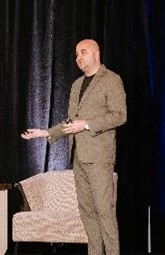 Sayed Maddaeni began his session with a list of questions organizations need to answer when setting a sustainability goal: "Do you want to achieve hourly matching or annual matching? Do you want to reduce emissions? What are the costs and risks? How much exposure will you have? How do you get alignment with your executive team? How do you maximize shareholder value? And once you have a program set, how do you actually execute on it?" Speaking to the energy customers in the audience, he continued, "All organizations that we've talked to have the same problems. How do you source projects? How do you evaluate them? How do you transact? And the story doesn't end there. Once you've made a procurement, how do you manage it? Remember, more than sustainability, this is a financial investment, so your CFOs will ask questions. All of this is a big job for any sustainability team, and it's hard to accomplish. That's why, as an industry, we need to work together to make sure these pain points are alleviated."
Sayed Maddaeni began his session with a list of questions organizations need to answer when setting a sustainability goal: "Do you want to achieve hourly matching or annual matching? Do you want to reduce emissions? What are the costs and risks? How much exposure will you have? How do you get alignment with your executive team? How do you maximize shareholder value? And once you have a program set, how do you actually execute on it?" Speaking to the energy customers in the audience, he continued, "All organizations that we've talked to have the same problems. How do you source projects? How do you evaluate them? How do you transact? And the story doesn't end there. Once you've made a procurement, how do you manage it? Remember, more than sustainability, this is a financial investment, so your CFOs will ask questions. All of this is a big job for any sustainability team, and it's hard to accomplish. That's why, as an industry, we need to work together to make sure these pain points are alleviated."
Renewable Thermal – The Next Frontier in Decarbonization
Zephyr Taylor, Global Category Director - Renewable Energy and Carbon, Mars, Inc.
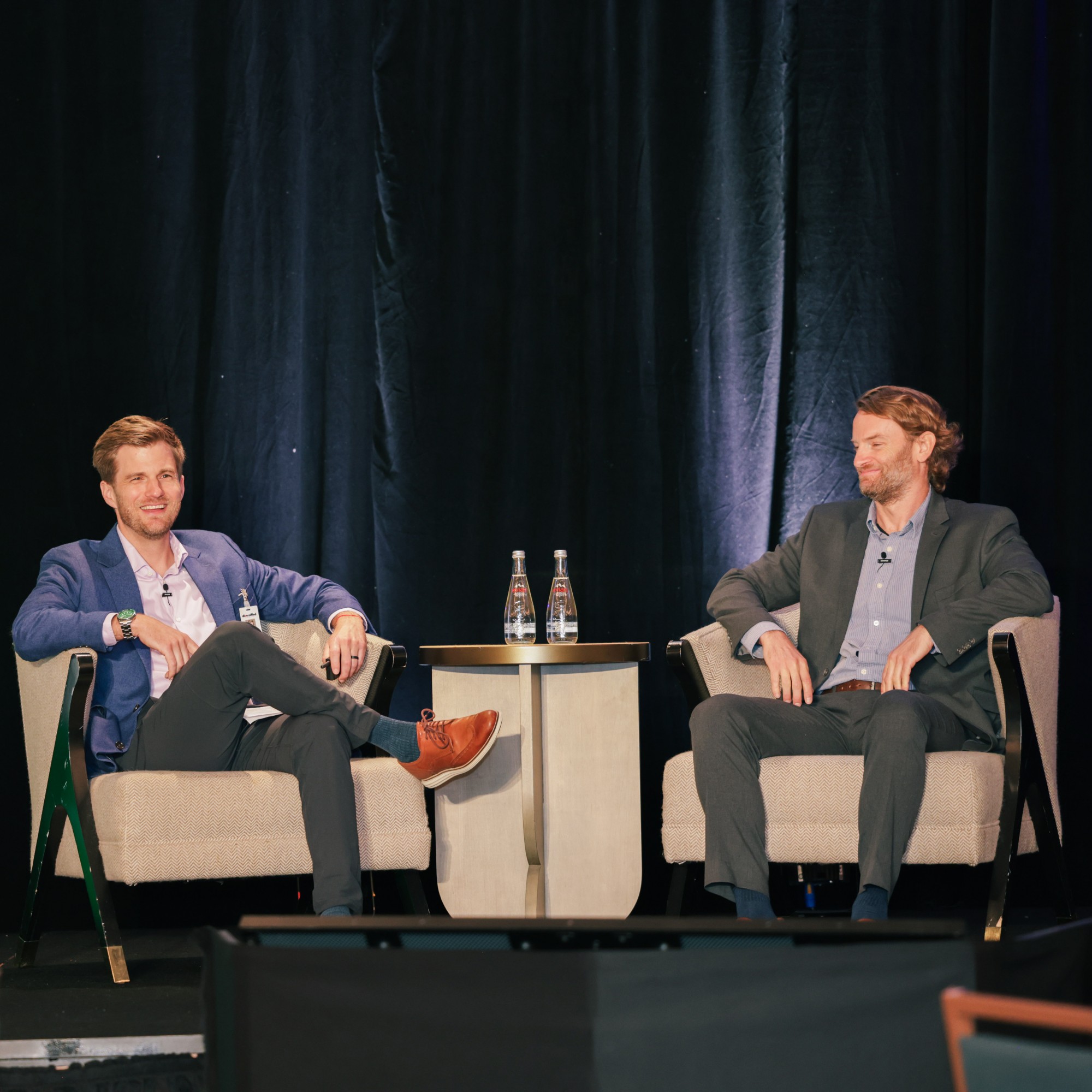 During this session, SED’s Wes Doane (left) noted, “It seems like a steep learning curve to deploy renewable thermal in that there may be no overlap with what energy customers have done before.” Zephyr Taylor (right) responded, “That’s true. You could easily do your first onsite solar PV project. There are challenges, but at the end of the day, that is a turnkey technology with a tried and true history.” On the other hand, he explained, “Considering the renewable thermal picture, something like solar thermal works well when you get it set up, but just understanding all of the mechanics, how it plays out in development and construction, is quite a different process.” Far from discouraging audience members, Taylor said, “I want to emphasize if you have a significant thermal load, don't wait to address it. Get involved, get engaged, and get your internal stakeholders and leadership thinking about this. Make this front and center in your clean energy transition and decarbonization journey because it’s going to take more time — but it matters, and you need to be able to articulate why this matters now."
During this session, SED’s Wes Doane (left) noted, “It seems like a steep learning curve to deploy renewable thermal in that there may be no overlap with what energy customers have done before.” Zephyr Taylor (right) responded, “That’s true. You could easily do your first onsite solar PV project. There are challenges, but at the end of the day, that is a turnkey technology with a tried and true history.” On the other hand, he explained, “Considering the renewable thermal picture, something like solar thermal works well when you get it set up, but just understanding all of the mechanics, how it plays out in development and construction, is quite a different process.” Far from discouraging audience members, Taylor said, “I want to emphasize if you have a significant thermal load, don't wait to address it. Get involved, get engaged, and get your internal stakeholders and leadership thinking about this. Make this front and center in your clean energy transition and decarbonization journey because it’s going to take more time — but it matters, and you need to be able to articulate why this matters now."
Almost At Your Doorstep? New Technologies Worth Watching, and Some That Aren’t
Peter Kelly-Detwiler, Principal, NorthBridge Energy Partners LLC
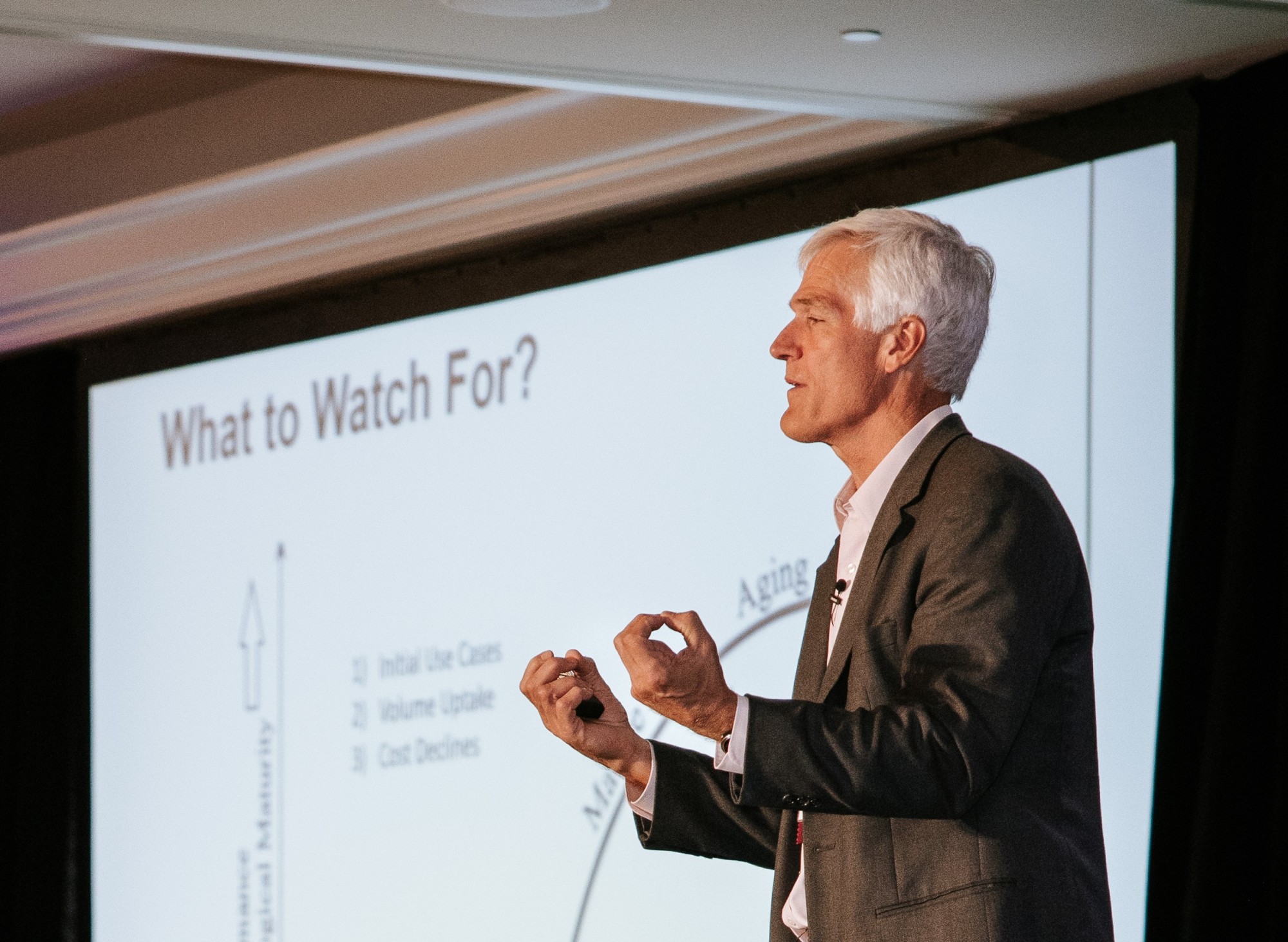 Addressing the latest trends in electric vehicles (EVs), Peter Kelly-Detwiler reminded the audience, "Transportation is responsible for over a quarter of global GHG emissions. We all know that EVs have made significant incursions into personal transportation, about 9% of vehicles moving off the lot. We're about to see the next wave of lower-cost sedans and trucks coming to the marketplace as battery costs continue to fall," a trend that will affect companies trying to decarbonize their fleets. "As battery chemistry continues to change, sodium-ion batteries and other sodium technologies are evolving, as well. The Chinese are now starting to bring sodium batteries into the transportation marketplace. They don't have the same density as lithium-ion batteries, but they charge very quickly, and they have very long lifecycles. Potentially, they could drive a vehicle for a million miles. So I think we'll see a second wave of growth. Those who have declared the death of the EV are probably being significantly premature."
Addressing the latest trends in electric vehicles (EVs), Peter Kelly-Detwiler reminded the audience, "Transportation is responsible for over a quarter of global GHG emissions. We all know that EVs have made significant incursions into personal transportation, about 9% of vehicles moving off the lot. We're about to see the next wave of lower-cost sedans and trucks coming to the marketplace as battery costs continue to fall," a trend that will affect companies trying to decarbonize their fleets. "As battery chemistry continues to change, sodium-ion batteries and other sodium technologies are evolving, as well. The Chinese are now starting to bring sodium batteries into the transportation marketplace. They don't have the same density as lithium-ion batteries, but they charge very quickly, and they have very long lifecycles. Potentially, they could drive a vehicle for a million miles. So I think we'll see a second wave of growth. Those who have declared the death of the EV are probably being significantly premature."
Smart Energy Decisions' next event is Net Zero Forum Fall, set for September 16-18, 2024, at the Westin Westminster, Colorado. Click here for more information.
Read These Related Articles:
Stay Up-To-Date

